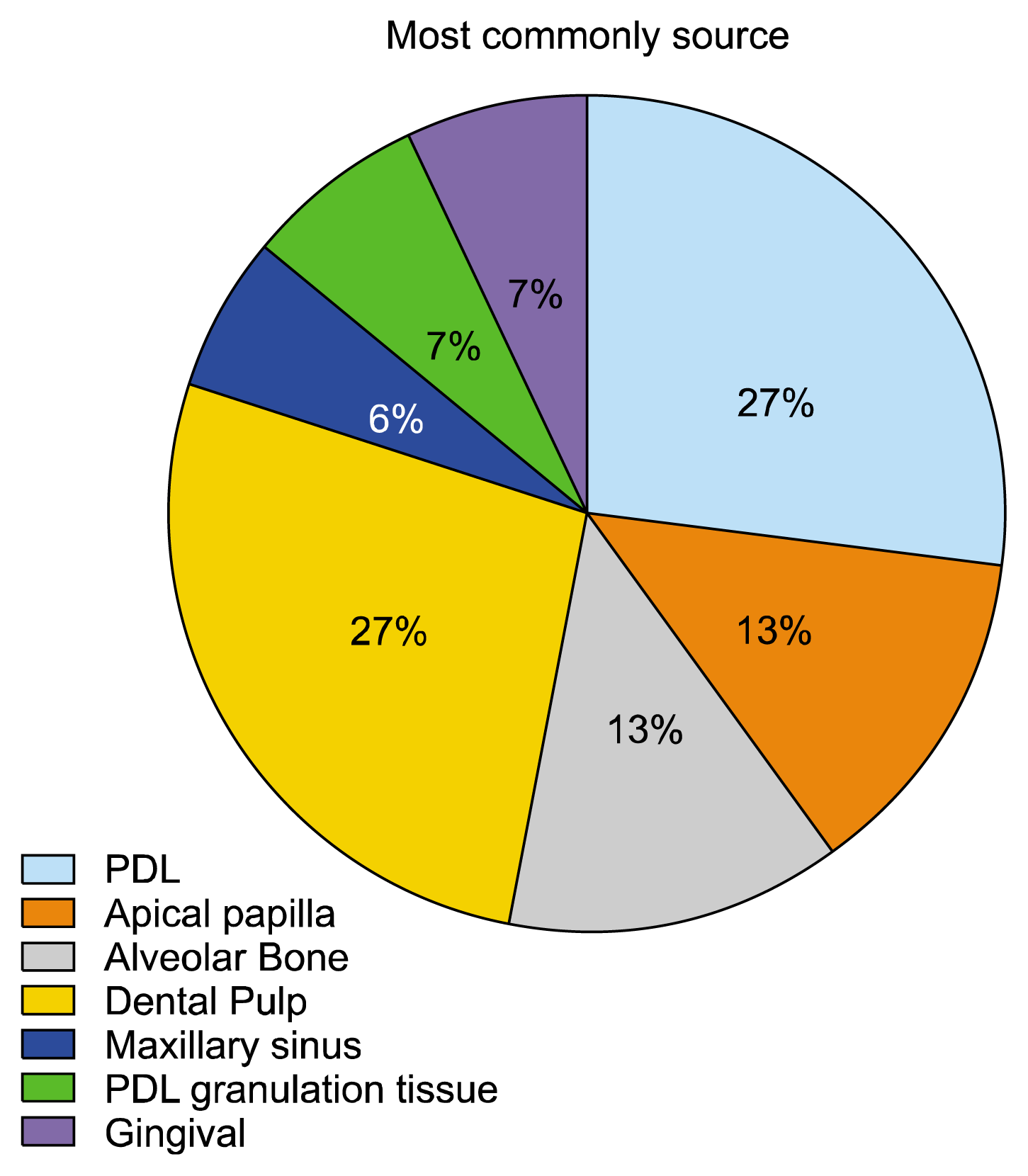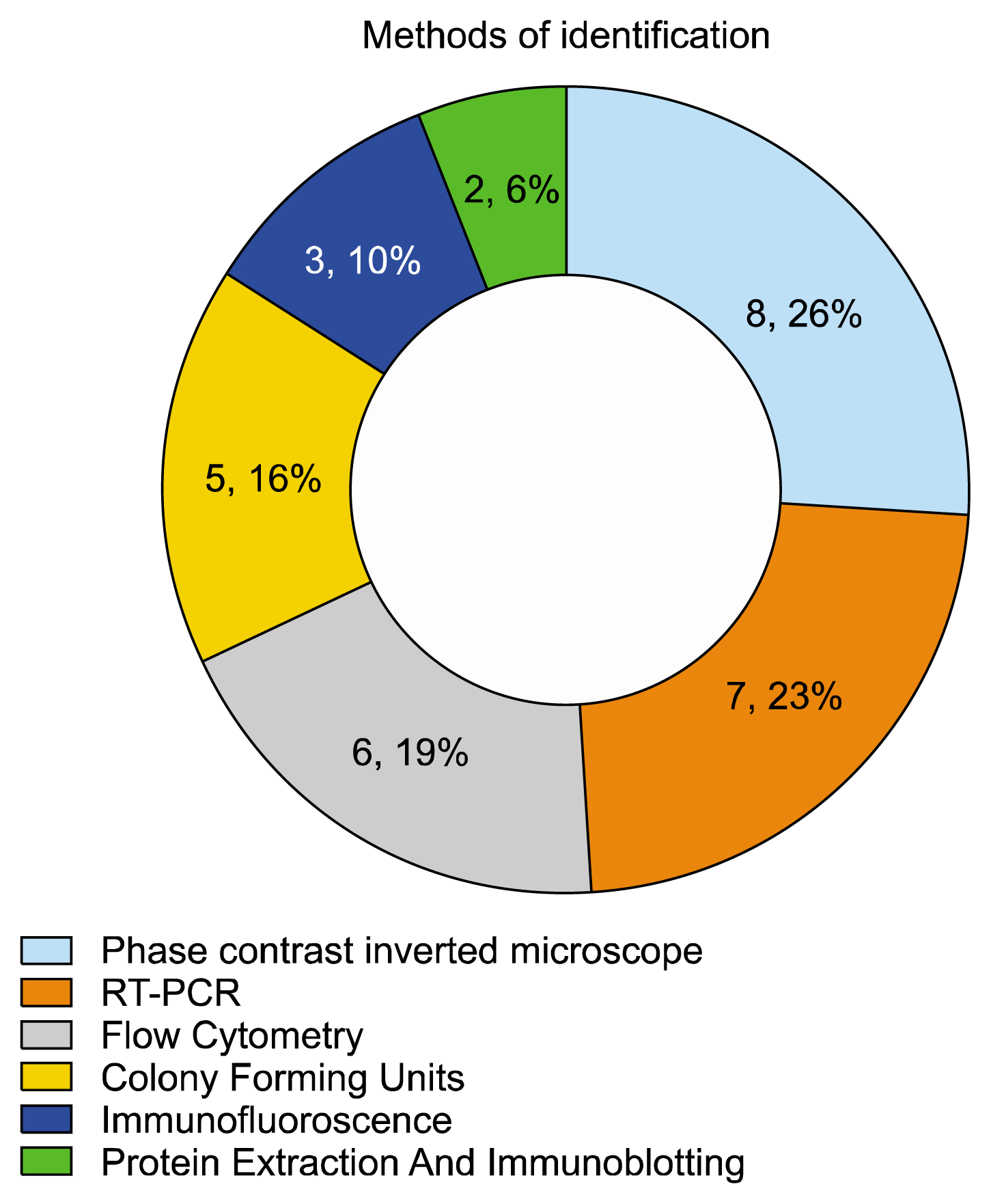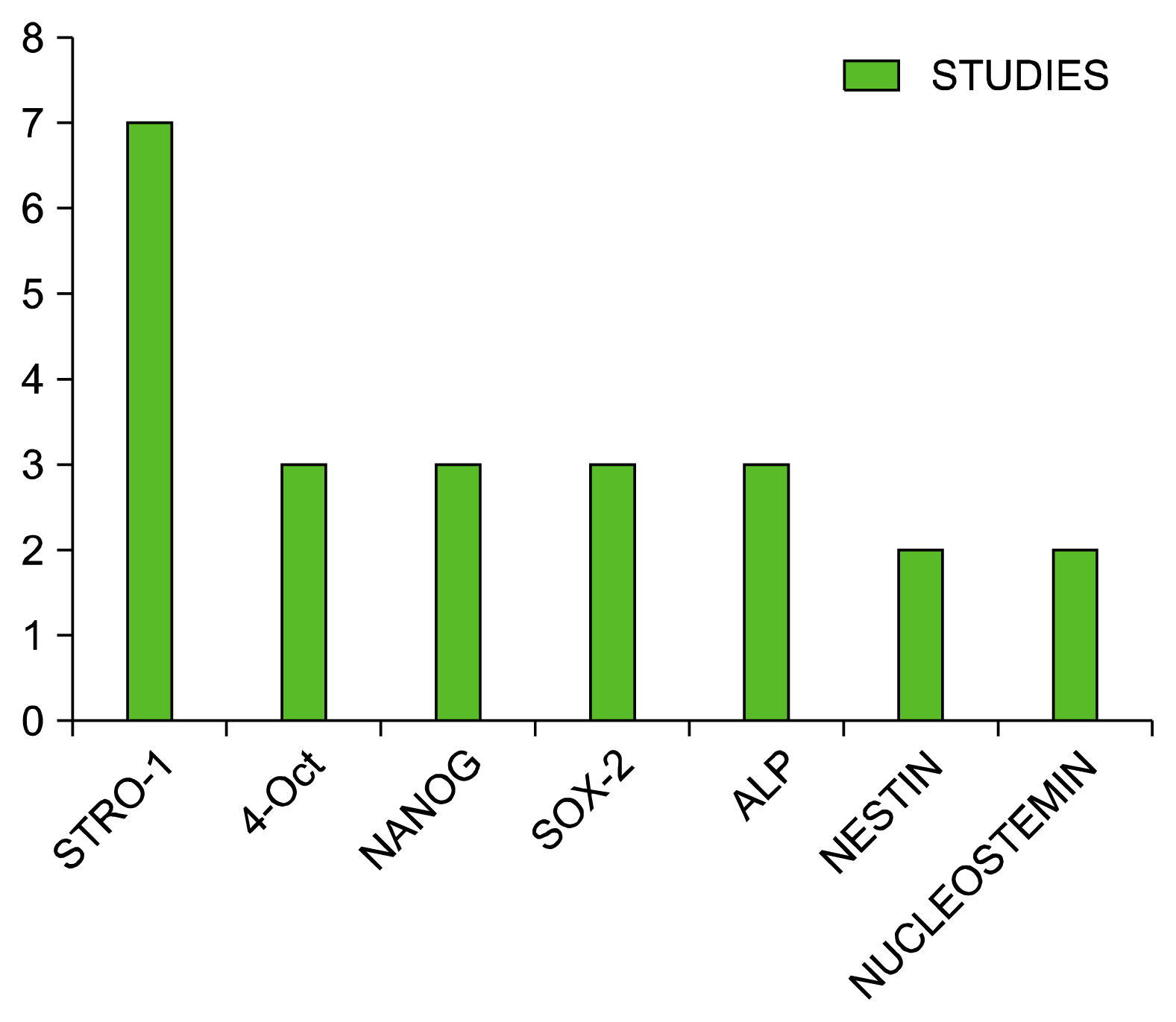1. Haeckel E. Historie de La créacion dês etres organisés. 3rd ed. Paris: Librairie C. Reinwald;1903.
2. Thomson JA, Kalishman J, Golos TG, Durning M, Harris CP, Becker RA, Hearn JP. Isolation of a primate embryonic stem cell line. Proc Natl Acad Sci U S A. 1995; 92:7844–7848. DOI:
10.1073/pnas.92.17.7844. PMID:
7544005. PMCID:
41242.

3. Weissman IL, Anderson DJ, Gage F. Stem and progenitor cells: origins, phenotypes, lineage commitments, and transdifferentiations. Annu Rev Cell Dev Biol. 2001; 17:387–403. DOI:
10.1146/annurev.cellbio.17.1.387. PMID:
11687494.

5. Silva LB, Neto AP, Pacheco RG, Júnior SA, de Menezes RF, Carneiro VS, Araújo NC, da Silveira MM, de Albuquerque DS, Gerbi ME, Álvares PR, de Arruda JA, Sobral AP. The Promising Applications of Stem Cells in the Oral Region: Literature Review. Open Dent J. 2016; 10:227–235. DOI:
10.2174/1874210601610010227. PMID:
27386008. PMCID:
4911749.

6. Jamal M, Chogle S, Goodis H, Karam SM. Dental stem cells and their potential role in regenerative medicine. J Med Sci. 2011; 4:53–61.

7. Mattioli-Belmonte M, Teti G, Salvatore V, Focaroli S, Orciani M, Dicarlo M, Fini M, Orsini G, Di Primio R, Falconi M. Stem cell origin differently affects bone tissue engineering strategies. Front Physiol. 2015; 6:266. DOI:
10.3389/fphys.2015.00266. PMID:
26441682. PMCID:
4585109.

8. Kato H, Katayama N, Taguchi Y, Tominaga K, Umeda M, Tanaka A. A synthetic oligopeptide derived from enamel matrix derivative promotes the differentiation of human periodontal ligament stem cells into osteoblast-like cells with increased mineralization. J Periodontol. 2013; 84:1476–1483. DOI:
10.1902/jop.2012.120469.

9. Kim SS, Kwon DW, Im I, Kim YD, Hwang DS, Holliday LS, Donatelli RE, Son WS, Jun ES. Differentiation and characteristics of undifferentiated mesenchymal stem cells originating from adult premolar periodontal ligaments. Korean J Orthod. 2012; 42:307–317. DOI:
10.4041/kjod.2012.42.6.307.

10. Seo BM, Miura M, Gronthos S, Bartold PM, Batouli S, Brahim J, Young M, Robey PG, Wang CY, Shi S. Investigation of multipotent postnatal stem cells from human periodontal ligament. Lancet. 2004; 364:149–155. DOI:
10.1016/S0140-6736(04)16627-0. PMID:
15246727.

11. Gay IC, Chen S, MacDougall M. Isolation and characterization of multipotent human periodontal ligament stem cells. Orthod Craniofac Res. 2007; 10:149–160. DOI:
10.1111/j.1601-6343.2007.00399.x. PMID:
17651131.

12. Karbanová J, Soukup T, Suchánek J, Pytlík R, Corbeil D, Mokrý J. Characterization of dental pulp stem cells from impacted third molars cultured in low serum-containing medium. Cells Tissues Organs. 2011; 193:344–365. DOI:
10.1159/000321160.

13. Yu J, He H, Tang C, Zhang G, Li Y, Wang R, Shi J, Jin Y. Differentiation potential of STRO-1+ dental pulp stem cells changes during cell passaging. BMC Cell Biol. 2010; 11:32. DOI:
10.1186/1471-2121-11-32. PMID:
20459680. PMCID:
2877667.

14. Laino G, d’Aquino R, Graziano A, Lanza V, Carinci F, Naro F, Pirozzi G, Papaccio G. A new population of human adult dental pulp stem cells: a useful source of living autologous fibrous bone tissue (LAB). J Bone Miner Res. 2005; 20:1394–1402. DOI:
10.1359/JBMR.050325. PMID:
16007337.

15. Jo YY, Lee HJ, Kook SY, Choung HW, Park JY, Chung JH, Choung YH, Kim ES, Yang HC, Choung PH. Isolation and characterization of postnatal stem cells from human dental tissues. Tissue Eng. 2007; 13:767–773. DOI:
10.1089/ten.2006.0192. PMID:
17432951.

16. Wu J, Huang GT, He W, Wang P, Tong Z, Jia Q, Dong L, Niu Z, Ni L. Basic fibroblast growth factor enhances stemness of human stem cells from the apical papilla. J Endod. 2012; 38:614–622. DOI:
10.1016/j.joen.2012.01.014. PMID:
22515889. PMCID:
3499972.

17. Fawzy El-Sayed KM, Paris S, Becker S, Kassem N, Ungefroren H, Fändrich F, Wiltfang J, Dörfer C. Isolation and characterization of multipotent postnatal stem/progenitor cells from human alveolar bone proper. J Craniomaxillofac Surg. 2012; 40:735–742. DOI:
10.1016/j.jcms.2012.01.010. PMID:
22421466.

18. Wada N, Wang B, Lin NH, Laslett AL, Gronthos S, Bartold PM. Induced pluripotent stem cell lines derived from human gingival fibroblasts and periodontal ligament fibroblasts. J Periodontal Res. 2011; 46:438–447. DOI:
10.1111/j.1600-0765.2011.01358.x. PMID:
21443752.

19. Kim SW, Lee IK, Yun KI, Kim CH, Park JU. Adult stem cells derived from human maxillary sinus membrane and their osteogenic differentiation. Int J Oral Maxillofac Implants. 2009; 24:991–998.
20. Hung TY, Lin HC, Chan YJ, Yuan K. Isolating stromal stem cells from periodontal granulation tissues. Clin Oral Investig. 2012; 16:1171–1180. DOI:
10.1007/s00784-011-0600-5.

21. Bartold PM, McCulloch CA, Narayanan AS, Pitaru S. Tissue engineering: a new paradigm for periodontal regeneration based on molecular and cell biology. Periodontol 2000. 2000; 24:253–269. DOI:
10.1034/j.1600-0757.2000.2240113.x.

22. Morsczeck C, Götz W, Schierholz J, Zeilhofer F, Kühn U, Möhl C, Sippel C, Hoffmann KH. Isolation of precursor cells (PCs) from human dental follicle of wisdom teeth. Matrix Biol. 2005; 24:155–165. DOI:
10.1016/j.matbio.2004.12.004. PMID:
15890265.

23. Gronthos S, Arthur A, Bartold PM, Shi S. A method to isolate and culture expand human dental pulp stem cells. Methods Mol Biol. 2011; 698:107–121. DOI:
10.1007/978-1-60761-999-4_9. PMID:
21431514.

24. Gronthos S, Mankani M, Brahim J, Robey PG, Shi S. Postnatal human dental pulp stem cells (DPSCs) in vitro and in vivo. Proc Natl Acad Sci U S A. 2000; 97:13625–13630. DOI:
10.1073/pnas.240309797. PMID:
11087820. PMCID:
17626.
25. Kaku M, Komatsu Y, Mochida Y, Yamauchi M, Mishina Y, Ko CC. Identification and characterization of neural crest-derived cells in adult periodontal ligament of mice. Arch Oral Biol. 2012; 57:1668–1675. DOI:
10.1016/j.archoralbio.2012.04.022. PMID:
22704955. PMCID:
3537832.

26. Gronthos S, Zannettino AC, Hay SJ, Shi S, Graves SE, Kortesidis A, Simmons PJ. Molecular and cellular characterisation of highly purified stromal stem cells derived from human bone marrow. J Cell Sci. 2003; 116:1827–1835. DOI:
10.1242/jcs.00369. PMID:
12665563.

27. Shi S, Bartold PM, Miura M, Seo BM, Robey PG, Gronthos S. The efficacy of mesenchymal stem cells to regenerate and repair dental structures. Orthod Craniofac Res. 2005; 8:191–199. DOI:
10.1111/j.1601-6343.2005.00331.x. PMID:
16022721.

28. Laino G, Graziano A, d’Aquino R, Pirozzi G, Lanza V, Valiante S, De Rosa A, Naro F, Vivarelli E, Papaccio G. An approachable human adult stem cell source for hard-tissue engineering. J Cell Physiol. 2006; 206:693–701. DOI:
10.1002/jcp.20526.





 PDF
PDF Citation
Citation Print
Print





 XML Download
XML Download